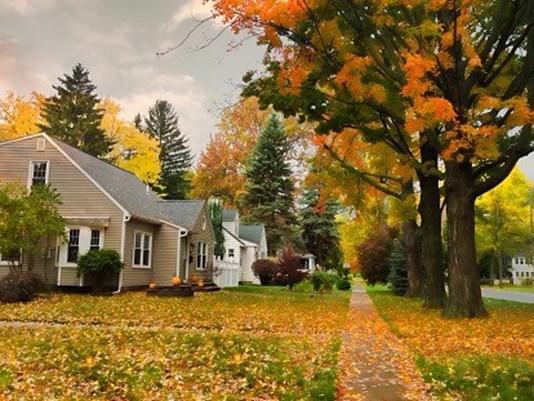
After a hot summer, some of us are ready to cool down and enjoy fall. This means it’s almost time to turn on the heat and turn off the air conditioning. One thing most people don’t enjoy about fall is the amount of energy they use to heat their home. A survey done by the U.S. Energy Information Administration shows that space heating makes up 55% of energy use in Michigan homes and 41% nationally. It may be time to invest in energy efficient heating for our planet and for your home’s comfort. Here are our top five fall energy saving tips to help you lower your energy use when it’s time to turn on the heat.
Get an energy audit
An energy audit is the first step in improving your home’s comfort and energy use. The energy audit will show you where you can conserve the most energy throughout your home and what improvements can be made to solve your home’s comfort and energy efficiency issues. This will ensure you fix or install the right systems, and confirms the health and safety of your home. If you get an audit during the fall, you may be able to install energy efficient heating systems just in time for the colder months.
Get a routine maintenance check on your furnace
It’s important to not only inspect your furnace for anything unusual, but to also contact an HVAC professional to look at your furnace and thermostat before you turn on your heating for the season. During the colder months, be sure to replace or clean your air filter every three to six months. This prevents any debris from making your system work harder and getting into your home and causing health issues. Make sure to also dust your registers regularly and open your heating vents.
Invest in insulation and air sealing
Insulation helps keep heat in your home in the colder months and out in the warmer months. This will help limit the amount of work your furnace must do to keep your home warm. Insulation also helps prevent icicles from forming off your roof and creating a potential hazard. Along with insulation, you should also invest in air sealing to prevent leaks. Air leaks typically come from gaps in certain areas of your home such as window trim, recessed lights, top plates, basement rim joists, and above cabinets and showers. Having both insulation and air sealing in your house reduces drafts and slows down the heat transfer in your home.
Use the sun’s heat
During the fall and winter, keep your shades and curtains open to let in sunlight that will help heat your home. Be sure to close them at night when your windows get colder. You can also invest in solar panels to power your home depending on your home’s orientation.
Make small fixes around your home
There are small things you can do around the house that make the most out of the heat you use, while still making your home comfortable.
- Install a programmable thermostat and schedule it to lower the heat when you’re away, or install a wi-fi thermostat to adjust the temperature even when you are not home.
- Turn on your ceiling fan and rotate the blades clockwise. This will help push heat down into the room.
- Move furniture or other objects that are blocking your vents to improve air flow.
- Keep your doors and windows locked. This helps keep them pushed tight against the weather stripping to prevent air leaks.

Follow us